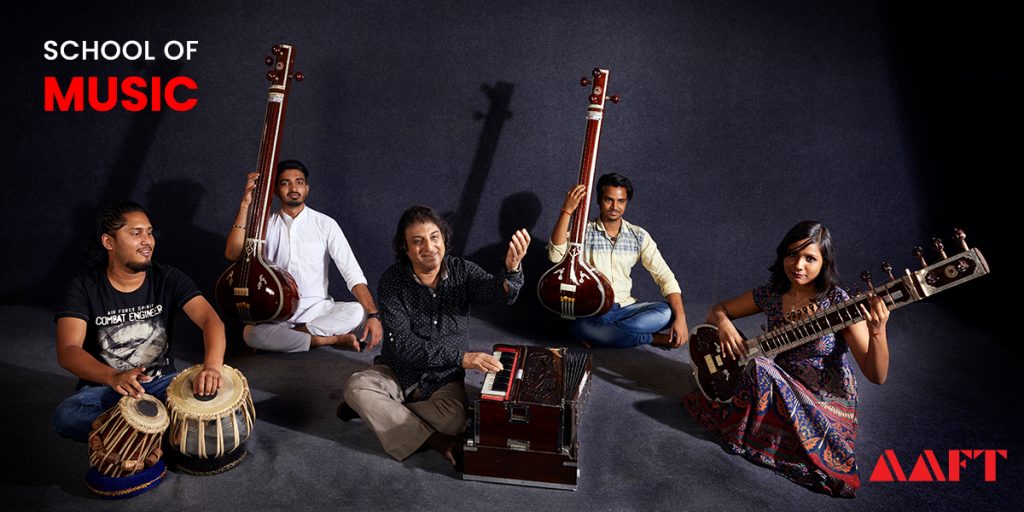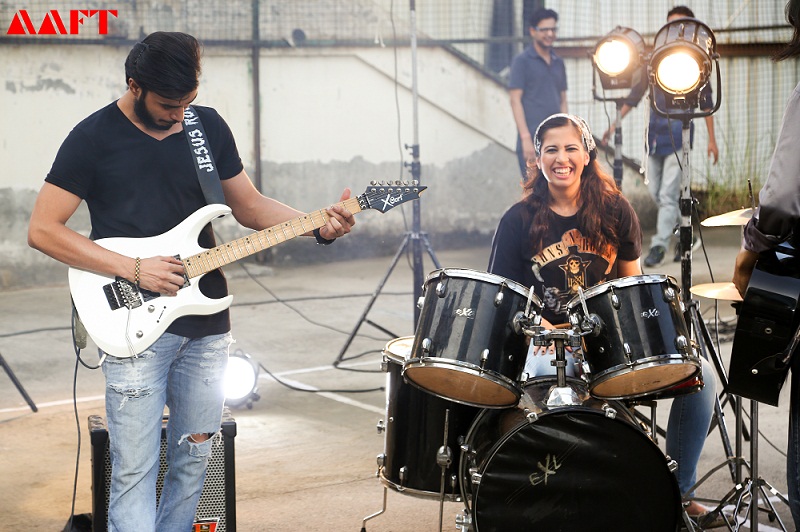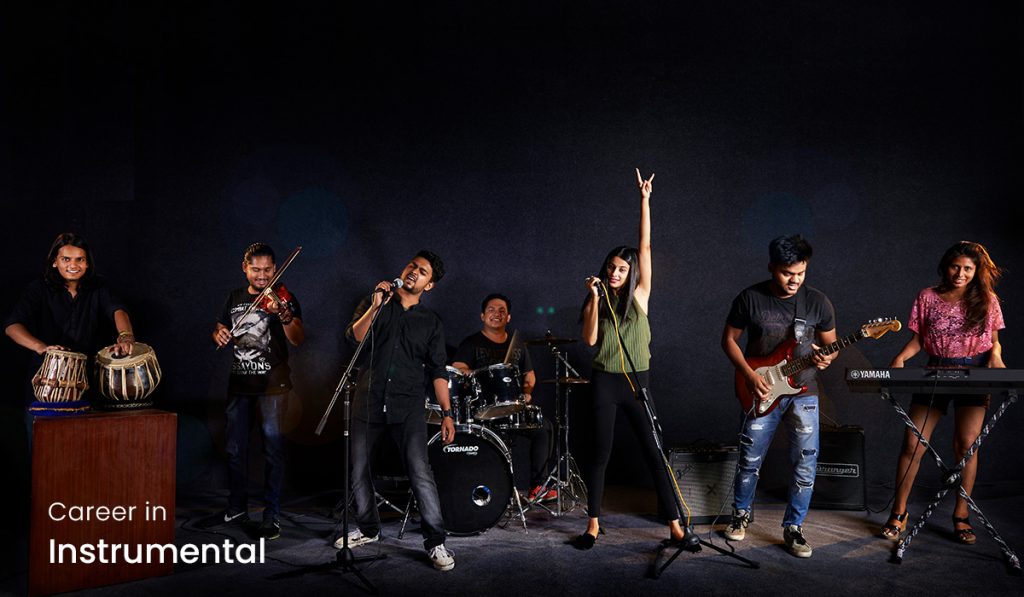Indian Classical Music Vs Western Music: A Comparative Guide
Do you prefer the melodies of Indian classical music or Western music? Either way, these musical traditions, with their special vibes, have been around for a long time.
Indian classical music, existing for over two thousand years, is all about feelings and spirituality. It’s like a mesmerizing dance of intricate melodies (ragas) and complex rhythms (talas), sparking creativity and improvisation.
Now, let’s talk about Western music. It started way back in medieval and Renaissance times, and it has transformed a lot since then. Think symphonies, operas, and lots of different music styles. Harmony, counterpoint, and orchestration have been the big players, shaping Western music for centuries.
In this article, we’ll explore the musical connection between Indian and Western music, checking out what they share and what makes Indian classical and Western music unique.
Do you want free career counseling?
Ignite Your Ambitions- Seize the Opportunity for a Free Career Counseling Session.
- 30+ Years in Education
- 250+ Faculties
- 30K+ Alumni Network
- 10th in World Ranking
- 1000+ Celebrity
- 120+ Countries Students Enrolled
Before getting into comparing the two, let’s get a glimpse of understanding Indian and Western Music.
Indian Classical Music:
Indian classical music is a captivating art form that follows a system of ragas and talas. Think of a raga as a blueprint for creating melodies by arranging musical notes in a specific order. Imagine a tala as a guide for arranging beats in a specific order to create a rhythm. What makes Indian classical music special is its focus on improvisation – musicians can freely explore and create unique compositions within the ragas and talas. Instruments like the sitar, tabla, and harmonium are often used in performances. There are two main types of Indian classical music – Hindustani in the North and Carnatic in the South. Although both fall under the umbrella of Indian music, they differ slightly in ornamentation, creation, articulation, and scale. This musical tradition is a beautiful blend of various Indian cultures and tribes, resulting in a rich and intricate tapestry that defines the heartfelt essence of Indian classical music.
Read Also: The Impact of Technology on the Music Industry
Book Now →

Top 10 Career Options in Indian Classical Music Course
Here are the ten career options in Indian Classical Music:
1. Classical Vocalist: Graduates can pursue careers as classical vocalists, playing at concerts, music festivals, and cultural events.
2. Music Teacher: A lot of graduates decide to work as music teachers, instructing prospective students in Indian classical vocal music.
Do you want free career counseling?
Ignite Your Ambitions- Seize the Opportunity for a Free Career Counseling Session.3. Music Composer: Graduates with artistic aptitude can go into the music composition field. They are capable of writing cinematic scores, classical music compositions, and even fusion projects where they work with modern performers.
4. Playback Singer: Graduates with a great voice should look for jobs in the music and film industries as playback singers, contributing vocals to albums and motion pictures.
5. Music Therapist: As a therapeutic strategy, music therapy is becoming more and more well-liked.
6. Concert Organizer: Those with good organizational abilities can work as concert organizers, setting up festivals, events, and performances of well-known musicians.
7. Journalist or Music Critic: Recent graduates who have a strong interest in writing can pursue careers as journalists or music critics, writing reviews, features, and stories on classical music for print and internet media.
8. Radio Jockey or Anchor: Some graduates can present classical music-themed radio shows or television programs, sharing their knowledge and introducing listeners to classical pieces.
9. Music Researchers: For individuals who are interested in the theoretical and historical facets of classical music, research opportunities are available. 10. Music Producer: Technically proficient graduates might work as music producers, recording classical music albums and directing the production process.
Western Music:
Western music is a captivating musical tradition that follows a different path. Instead of ragas and talas, it thrives on harmony, melody, and rhythm. Harmony is like the teamwork of musical notes, creating a pleasing sound when played together. Melody is the main tune that catches your ear, and rhythm is the heartbeat of the music, guiding you to tap your foot along. Western music often sticks to a composed structure, where musicians follow a written piece, unlike the improvisational nature of Indian classical music.
Instruments like the piano, violin, and trumpet commonly take the stage. Unlike the North-South divide in Indian classical music, Western music has various genres like classical, jazz, pop, rock, and more, each with its unique style. The beauty of Western music lies in its diverse expressions and the freedom to experiment with different sounds and styles. It’s like a vibrant mosaic, where different musical cultures come together to create a rich and dynamic tapestry that defines the soulful essence of Western music.

Read Also: Online Music Courses vs. Traditional Music Degrees
Top 10 Career options in Western Music
Here are the ten career options in Westernl Music:
1. Musician (Individual Artist or Group Member): Musicians who play musical instruments or sing on stage as well as in studios spanning from classical to jazz to rock or pop.
2. Composer/arranger is a professional who creates original music compositions or rearranges existing pieces for different ensembles, films, theater, and other media.
3. Music Producers Those individuals are in charge of working with the artists through the entire recording process, shaping and creating the tracks’ sound and overall value.
4. Sound Engineers Those skilled in the technicalities of recording, mixing or mastering music in studio or live setting to produce good quality sounds.
5. Music teacher is a teacher who works with students at schools, colleges and private studios to teach them how to perform, compose, write music and understand its different aspects.
6. Music Therapists: Therapists that use music as a medical instrument for better mental, emotional and physical health for clients in different health centers.
7. Music Manager/Agent: Music industry experts who manage artists’ careers, oversee bookings, advertise, negotiate contracts, and take care of other music-related matters.
8. Music Critic/Journalist: People who factually describe performances and albums, talk to musicians, and feature articles in different magazines and other media.
9. Music Publisher: people or business organizations responsible for song and composition rights management to ensure they are properly licensed, distributed, and royalties are gathered.
10. Film/TV/Video: Game Music Composer Musicians write scores specifically for movies, television series, and computer games that enhance the visual properties of the respective media with appropriate music.
Comparative Study of Indian Classical Music & Western Music
Instruments Used:
In Indian classical music, you’ll hear instruments like the sitar, tabla, sarod, flute, and harmonium. Each of them has a special job in making the detailed patterns of ragas and talas. Now, in Western music, there’s a whole mix of instruments like the piano, violin, cello, trumpet, saxophone, and more. They come together in orchestras or smaller groups to create a beautiful and varied sound.
Musical Structures:
In Indian classical music, the building blocks are ragas and talas. Ragas set the tune, and talas create the beat. Musicians can get creative and make up new tunes on the spot. Now, in Western music, it’s about harmony, melody, and having a plan. They use written scores like a musical map, showing exactly how everything should sound and fit together.
Rhythmic Patterns:
In Indian classical music, it’s all about the beat, guided by something called “talas.” These beats form a kind of rhythm cycle, making the music go in circles. The rhythms can get pretty complex, with lots of patterns and accents that add excitement. Now, in Western music, they use various beats and rhythms too, but they’re often more straightforward. Even when they get fancy, there’s usually a standard way things flow in terms of rhythm.
Melodic Styles:
In Indian classical music, the tunes are led by something called “ragas.” Each raga brings out a different feeling or emotion. The melodies have tiny details, decorations, and sliding notes that give Indian music its unique sound. Now, in Western music, they stick to clear scales and modes. They like combining notes in a way that sounds good together. The melodies in Western music usually follow a planned and expected pattern, mixing the familiar with a bit of creativity.
Read Also: How to Choose the Right Music Course: Step-by-Step Guide
Nature And Spirituality:
In Indian classical music, there’s a strong tie to spiritual vibes and Indian beliefs. The tunes, called ragas, are even connected to certain times of the day or seasons, creating a link between music and nature. Now, in Western music, they might have some songs about religion or spiritual stuff, but mostly they cover a wide range of topics. The focus here is on making things sound good and expressing emotions, rather than directly connecting to spiritual practices.
Performance Practices:
In Indian classical music, you often get a mix of solo and group performances. The musicians get to be pretty creative on the spot, especially in longer concerts where they dive into the tunes and beats. Now, in Western music shows, you can have one person performing or a whole bunch in an orchestra. Everything is well-rehearsed and follows a plan, with less room for making things up on the spot compared to Indian classical music concerts.
Indian Classical and Western Music Blend in Modern Times
Musicians from various backgrounds are teaming up to blend Indian classical and Western music, creating a lively fusion appreciated globally. They’re mixing Indian elements like ragas and talas into Western songs and adding Western harmonies and instruments to traditional Indian melodies. This combination produces a unique sound that transcends cultural boundaries.
For instance, contemporary Indian artist Anoushka Shankar beautifully integrates traditional sitar tunes into Western music, showcasing the seamless collaboration between these two musical worlds. This collaboration not only highlights the adaptability of both traditions but also demonstrates how artists today are shaping a distinctive and globally resonant musical landscape.
Read Also: A Guide for Students Considering a Career in Music

Conclusion
While Indian classical music weaves emotions and spirituality through intricate ragas and talas, Western music’s charm lies in the harmony, melody, and structured compositions that have evolved over centuries.
The comparative study unveils the unique attributes of each tradition, from the instruments used and musical structures to rhythmic patterns and melodic styles. Despite their differences, modern times witness a beautiful fusion of Indian classical and Western music courses. For those who live and breathe music, it is time that you make a career out of it by enrolling with the AAFT School of Music which offers a valuable opportunity to explore and nurture musical talents.
Read Also: The Ultimate Guide: Comparing Instrumental & Vocal Music

AAFT has been providing the world with limitless creativity and expression since 1993! Through a dynamic and industry-driven curriculum, AAFT provides engaging and captivating articles to persuasive blogs and empowers its readers to explore diverse avenues of creative media education-related content.






